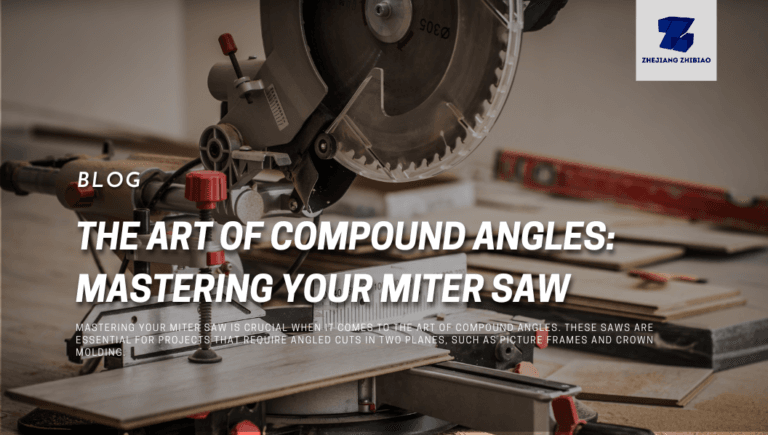Are you in the market for a handheld cut off machine? Look no further! In this article, we will discuss the pros and cons of handheld cut-off machines, so you can make an informed decision before purchasing. Handheld Cut Off Machines are versatile and efficient tools for various cutting tasks. Handheld cut-off machines can handle everything from cutting concrete and metal to tile and bricks. However, like any tool, handheld cut off machines come with their own set of pros and cons that you should consider before making a purchase.

Table of Contents
ToggleHandheld Cut Off Machines: The Pros
- Portability
One of the most significant advantages of handheld cut off machines is their portability. They are small and lightweight, making them easy to transport to job sites. You don’t have to worry about hauling around a cumbersome machine, which can save you time and effort.
- Versatility
Handheld cut off machines are incredibly versatile. They can be used for a variety of cutting tasks, including cutting concrete, metal, tile, and bricks. They can also be used for precision cutting tasks, making them an excellent tool for cutting intricate designs.

- Speed and Efficiency
Handheld cut off machines are fast and efficient. They are designed to make quick work of cutting tasks, which can save you time and money. They are also easy to use so that you can finish the job quickly and with minimal effort.
- Affordability
Handheld cut-off machines are relatively more affordable than other types of cutting tools. This makes them an excellent option for DIY enthusiasts and professionals on a budget.
- Safety Features
Handheld cut off machines come with a variety of safety features, including guards and trigger locks. These features help prevent accidents and injuries, making them a safer option than other types of cutting tools.

Handheld Cut Off Machines: The Cons
- Limited Cutting Depth
One of the most significant downsides of handheld cut off machines is their limited cutting depth. They are designed for shallow cuts, which can make them less effective for certain types of cutting tasks.
- Noise and Vibration
Handheld cut off machines can be pretty noisy and vibrate a lot during use. This can be a nuisance for some users and make it difficult to use the tool for extended periods.
- Dust and Debris
You can expect a lot of dust and debris when using a handheld cut-off machine. This can be a problem if you are working in an enclosed space or if you have respiratory issues. You will need to wear appropriate safety gear, including a mask and goggles, to protect yourself from the dust and debris.
- Power Source
Most handheld cut-off machines are powered by gas or electricity. Gas-powered machines are generally more powerful but emit harmful fumes, making them unsuitable for indoor use. On the other hand, electric-powered machines are quieter and cleaner but may not have the same cutting power as gas-powered machines.

- Blade Wear
Blades wear down over time, and this is no different with handheld cut off machine. Depending on the frequency of use, you may need to replace the blade more often than you would with other cutting tools. This can be an added expense that you need to consider.
- Operator Fatigue
Handheld cut off machines require a steady hand and a firm grip, which can be tiring over extended periods of use. This can be a problem if you have a lot of cutting to do, and you may need to take frequent breaks to avoid operator fatigue.
Conclusion
Handheld cut off machines are a versatile and efficient tool that can make quick work of a variety of cutting tasks. However, they come with their own pros and cons that you should consider before purchasing. The portability, versatility, speed and efficiency, affordability, and safety features are some of the benefits of using a handheld cut off machine. However, some downsides are the limited cutting depth, noise and vibration, dust and debris, power source, blade wear, and operator fatigue. By weighing the pros and cons, you can decide whether a handheld cut-off machine is the right tool for your cutting needs.
Read More: The Power of the Cut-Off Machine

FAQs
Can handheld cut-off machine cut through thick materials?
Handheld cut-off machine are designed for shallow cuts, so they may not be suitable for cutting through very thick materials. You may need to use a different cutting tool for these types of tasks.
Are handheld cut-off machine safe to use?
Handheld cut-off machine come with a variety of safety features, including guards and trigger locks. However, as with any cutting tool, there is always a risk of injury. You should always wear appropriate safety gear and follow the manufacturer’s instructions when using a handheld cut-off machine.
Can I use a handheld cut-off machine for precision cutting?
Yes, handheld cut-off machine can be used for precision cutting tasks. They are an excellent tool for cutting intricate designs and shapes.
How often do I need to replace the blade on a handheld cut-off machine?
The blade replacement frequency will depend on how often you use the machine and the type of materials you are cutting. Replace the blade when it shows signs of wear or becomes dull.
Can I use a gas-powered handheld cut-off machine indoors?
No, gas-powered handheld cut-off machine emit harmful fumes and should not be used indoors. It would be best if you only used electric-powered machines indoors.
Can handheld cut-off machine be used for wet cutting?
Yes, some handheld cut-off machine can be used for wet cutting. This can help reduce dust and debris and prolong the life of the blade.





